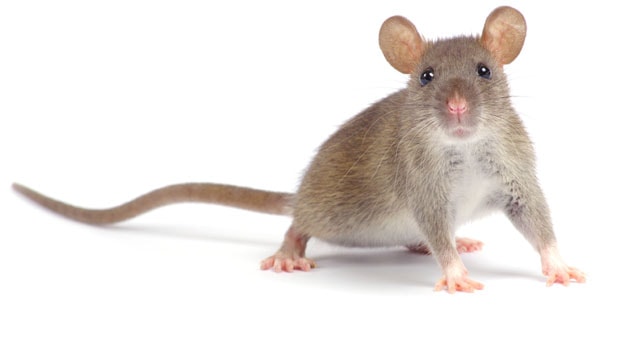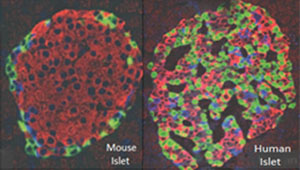The Mouse Trap

Are you sick of reading headlines proclaiming a cure for diabetes is at hand….for mice? You’re not alone.
Each year, more than 25 million vertebrate animals are used for research in U.S. biomedical laboratories. An estimated 85% to 90% percent are rodents, with the vast majority being mice bred solely for experimental purposes. Mice are small, docile, easily available, and inexpensive. They can be bred in large numbers in little time. Genetically altered mice can mimic human conditions or develop human diseases. The NOD (non-obese diabetic) mouse, a line bred to develop T1, is the subject of choice for almost all early-stage diabetes research. If a procedure works in mice, it’s big news, and human trials are often the next logical step.
So why have we cured diabetes in mice more than 400 times, but the same procedures have never cured a human being? After all, a mouse has a pancreas containing islets with insulin-producing beta cells. A mouse develops T1 when its immune system attacks the beta cells, shutting down their insulin-producing capability. If we can reverse that process in mice, why can’t we do so in humans?
It turns out that mouse islets and human islets are actually not all that similar, says Dr. Claresa S. Levetan, an endocrinologist and diabetes researcher at Chestnut Hill Hospital in Philadelphia. Dr. Levetan is also the founder and chief scientific and creative officer of Perle Bioscience, an Atlanta-based company focused on diabetes research. She and fellow researcher Susan M. Pierce, MPT, CDE, wrote about the differences between human and mouse islets in an article in the March/April 2013 issue of the journal Endocrine Practice.
“Humans have a more complex islet to protect them from hyperglycemia and hypoglycemia during times of feast and famine,” Dr. Levetan tells Insulin Nation. “Unlike a mouse, which lives for only a year and has islets made up predominantly of beta cells, a human islet contains 5 different cell types – alpha, beta, gamma, delta and epsilon – that are highly integrated.”
This complexity helps explain how illusionist and endurance artist David Blaine spent 44 days inside a Plexiglas cube in 2003, with no food or nutrients and drinking only water, and emerged with normal metabolic function, Dr. Levetan says. Even without food to induce glucose response, the hormonal balance between his cells remained within normal ranges.
“Blaine’s perfect glucose level demonstrates how islet function in humans is far more complex and interdependent than it is in mice,” says Levetan
Human islets also are heterogeneous in their architecture; their structure varies, depending on their size. Smaller human islets have been observed to be similar in structure to mouse islets. The structure of larger human islets, however, can differ considerably among themselves and in contrast to mouse islets, which tend to be more uniformly structured.

and cell type than human islets.
Blood vessels with smooth musculature also are more prominent in human islets than in mouse islets. This suggests that significant connections exist between cells within human islets and the nervous system, producing a constant “chatter” of information that goes to the brain and returns to the cells depending on the situation, such as the presence or absence of normal glucose levels, or emotional stress. It also means that different cells in an islet talk to each other in response to situations and secrete insulin or glucagon depending on the content of the conversation. An interrupted conversation between beta and alpha cells causes alphas to increase activity and number, with diminishing counter-response from the betas, thus increasing glucose levels in the bloodstream and triggering a diabetes diagnosis.
The conversation between islets and the nervous system begins before birth. Highly organized islet structure is already in place by the 10th week of fetal development. This period is normally the only time new islets are created in humans, except when acute pancreatic stress occurs and, perhaps, during pregnancy.
Mouse responsiveness to new beta cell formation is much greater than that in humans, possibly because mice eat almost constantly. This may be why beta cell regeneration techniques that succeed in mice fail to achieve the same result in humans. While research has shown that Type 1 diabetes is an autoimmune disease, blocking the cells attacking the pancreas does not generally result in regeneration of new insulin-producing beta cells in humans. Even when some therapies allow newly diagnosed T1 patients to extend the so-called “honeymoon period” of independent insulin production for humans, human beta cells do not regenerate as quickly as they do in mice.
The differences between mouse and human islets may make it feel like diabetes researchers are comparing apples and oranges, but it’s important to remember that mouse research is just one avenue towards advancing human research on diabetes. Diabetes researchers have been working with other 4-legged test subjects, including genetically unique piglets (see “Four-Legged Islet Factories: the Pigs of Auckland Island”), and there have been significant advances in computer modeling and stem-cell research, opening up new pathways for medical testing. Mouse research should be seen as a step in the process towards FDA approval for human clinical trials rather than the end-point of diabetes research.
So while it may be frustrating to read yet another headline of a cure for diabetes in mice, the silver lining may be that such news represents another step forward, even if a small one, in continuing diabetes research that will benefit humans, as well.
Robert Benchley contributed reporting to this article.
Thanks for reading this Insulin Nation article. Want more Type 1 news? Subscribe here.
Have Type 2 diabetes or know someone who does? Try Type 2 Nation, our sister publication.